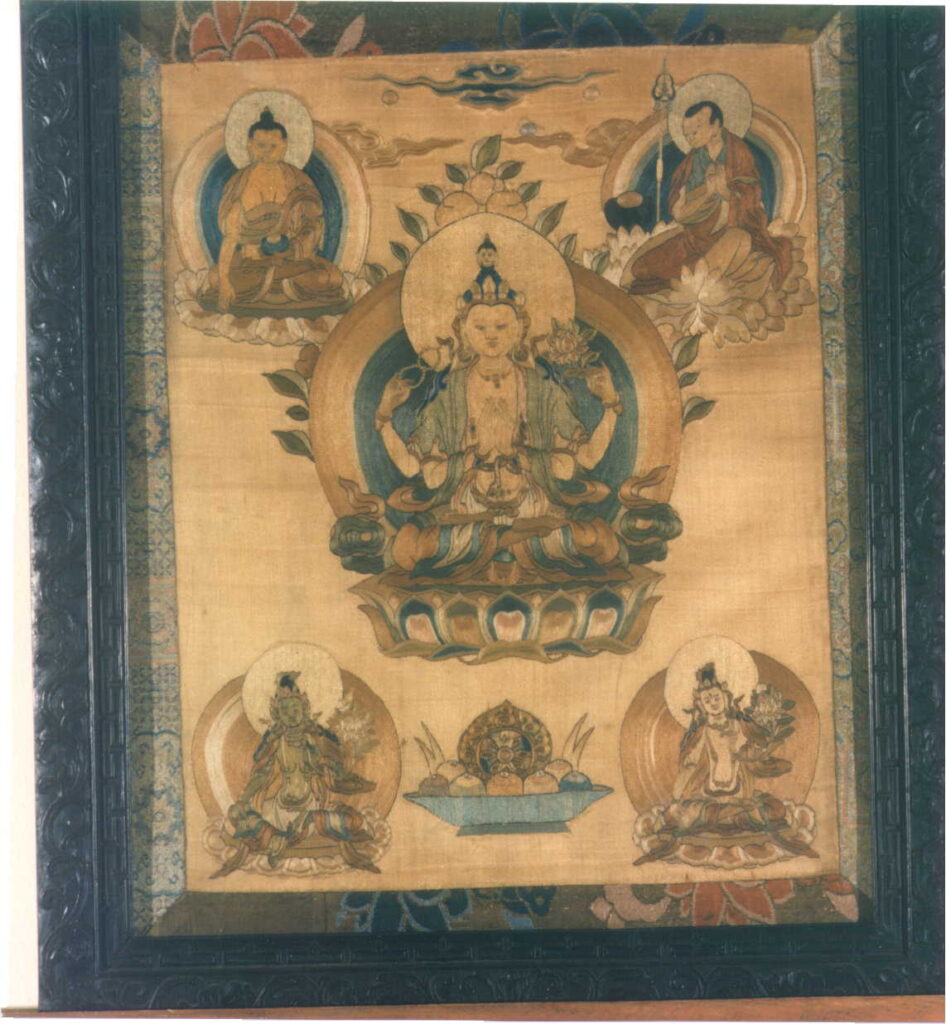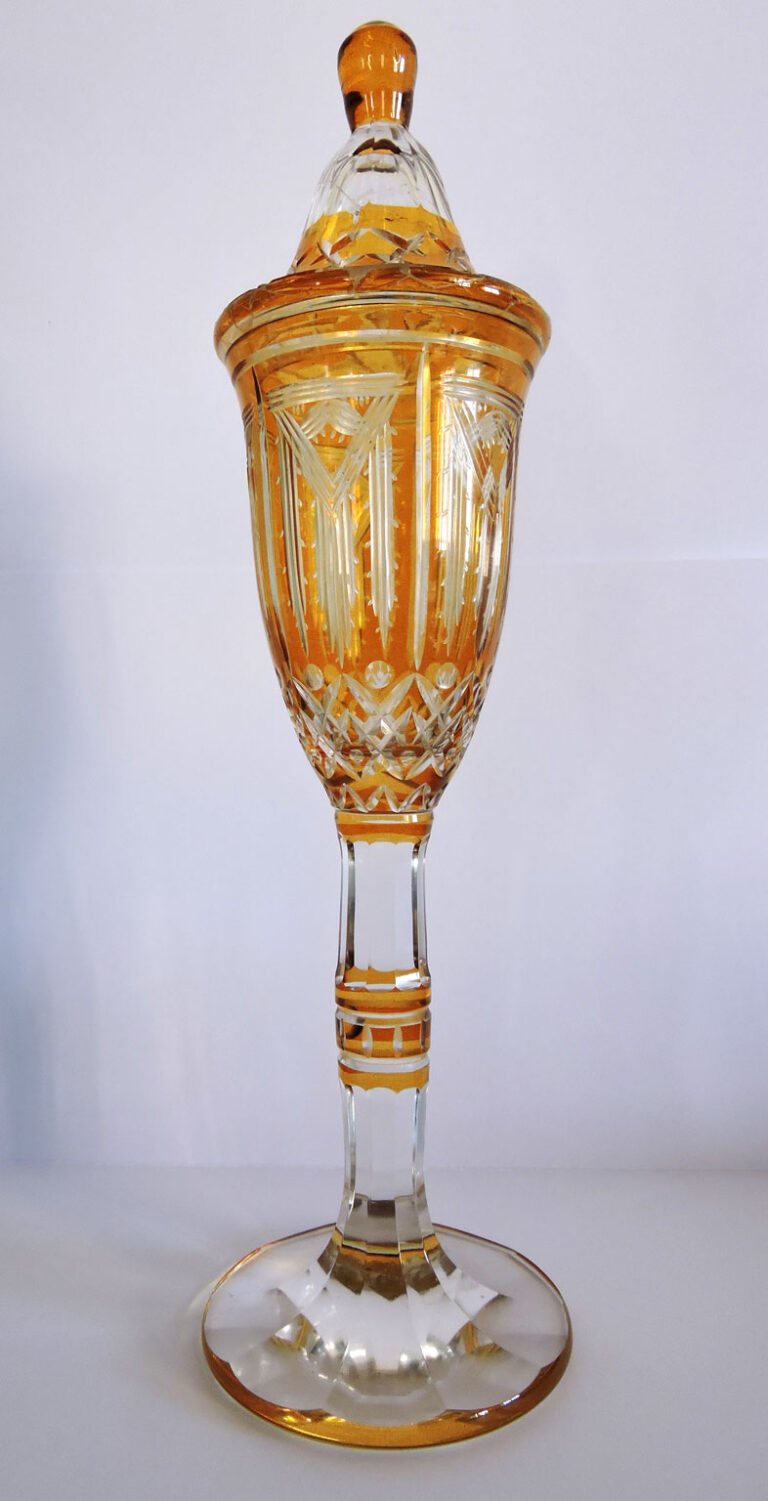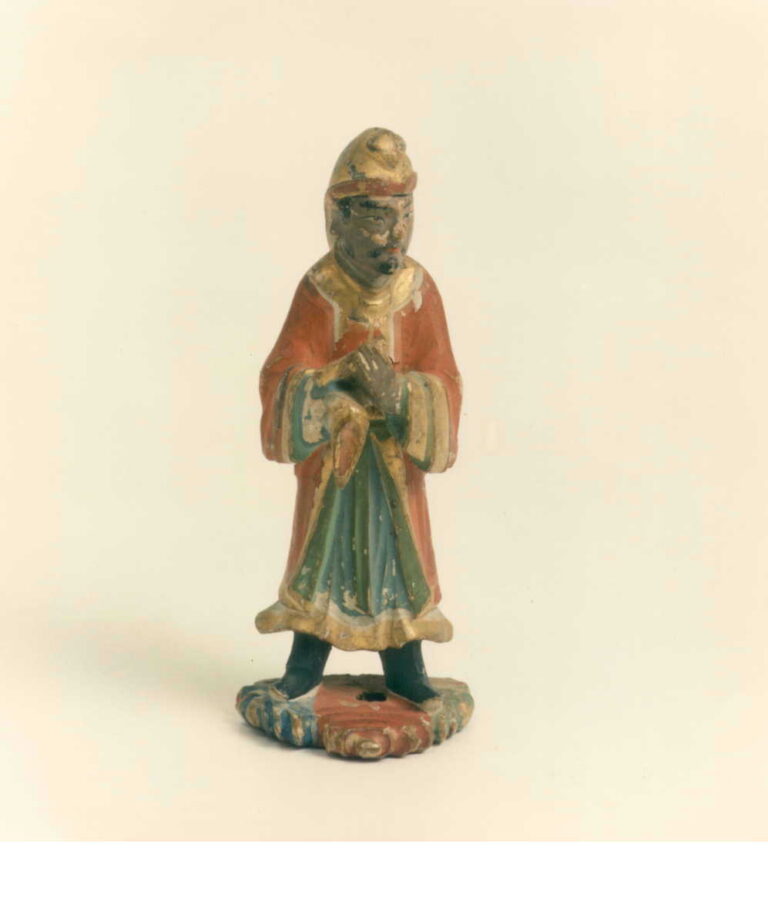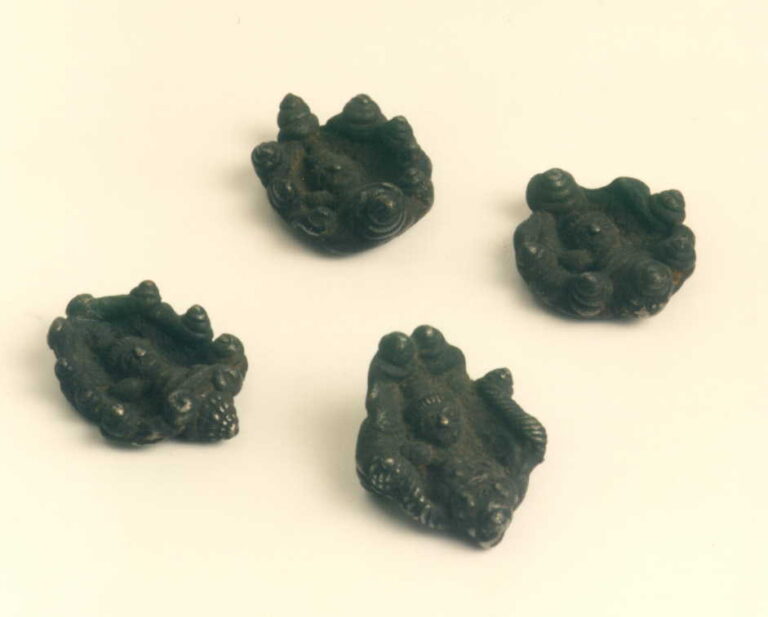SHAKAKAKSHARI AVALOKITESVARA
Thangka dedicated to one of the invocations of the bodhisattva Avalokitesvara, known as Shadakshari Avalokitesvara. This name, “he of the Sixth Syllable” alludes to the personification of the sense of liberation implied by the mantra Om Mani Padem Hum. For this he is depicted seated on a lotus flower, with four arms, two of which hold two of his attributes. With one of his right arms he raises a rosary, while with one of those on the left side, the lotus flower. With her two central arms, folded over her chest, she holds the sacred jewel in her hands. His face is framed in a five-pointed tiara, and his hair is topped with a small head, all gathered in the light of the circular halo, completed with another larger one that frames the whole figure.Avalokitesvara, in Tibetan is called Chenrezig, “the lord who watches”, being one of the highest protective divinities of the country. The introducer of Buddhism in Tibet, Sontsen Gampo, as well as the Dalai Lama are considered incarnations of Avalokitesvara.the central figure is surrounded by four seated religious images, each of them identified by their attributes and gestures. Thus, in the upper right corner is represented the serene figure of Buddha, in the left corner Sontsen Gampo, whose gaze is directed towards Avalokitesvara. In the lower plane, two feminine divinities of great devotion in Tibet, Green Tara and White Tara, flanking a fountain with symbols allusive to Buddhism, highlighting the dharma, the presence of these feminine divinities is directly related to Songtsen Gampo, through his wives, and in turn with Avalokitesvara. Green Tara, sits in the posture of lalitasana, holding with her left hand the lotus flower, while White Tara, sits in lotus or diamond position, also holding with her left hand a lotus flower. / Extracted from: Isabel CERVERA FERNÁNDEZ: Fundación Rodríguez-Acosta. Asian Art Collection. Bibliography: RHIE, M.; THURMANN, R.: Wisdom and Compassion. The Sacred Art of Tibet. New York, 1992, p. 145.




